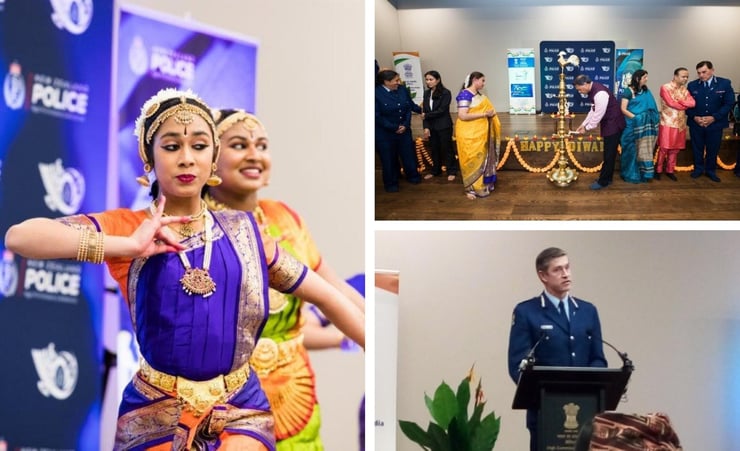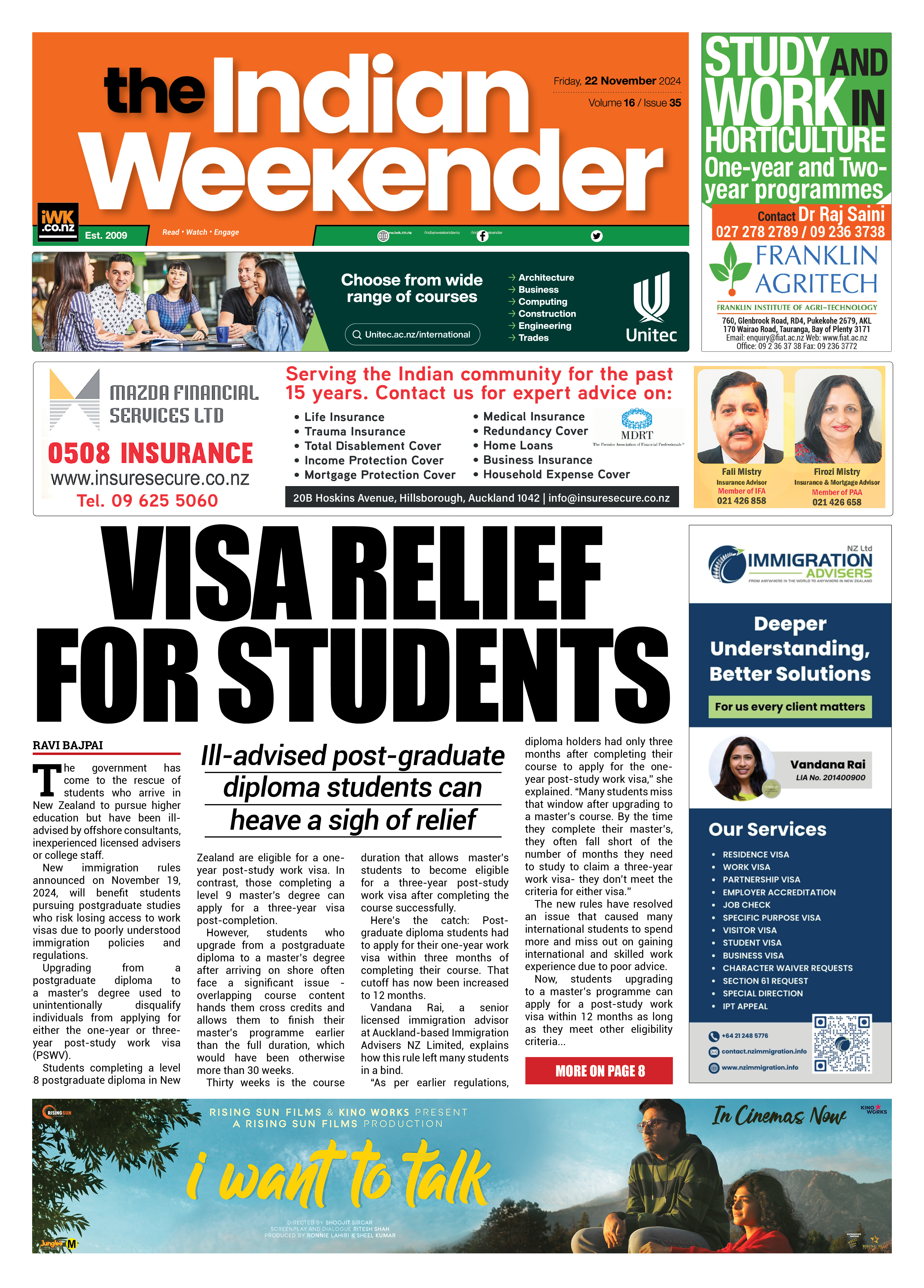NZ Police in midst of refreshing ethnic strategy

The New Zealand Police celebrated Diwali at the Indian High Commission in Wellington on October 13 with some snappy Bhangra dance moves.

Commissioner Andrew Coster and Deputy Commissioner (Iwi and Communities) Wallace Haumaha, along with other guests, lit the ceremonial lamp, which was followed by a Bharatanatyam dance recital by the students of the Natraj School of Dance.
The three young dancers, Sowjanya, Sai Nithya and Samhitha, then explained the legend behind the festival for the benefit of the uninitiated among the audience.
Addressing the assembly, Commissioner Coster said the Indian High Commission used to be on Level 9 of the police headquarters building on Molesworth St. “How the tables have turned as you’re now hosting us in this beautiful place,” he quipped, drawing titters from the audience.
Coster noted the rapid change that NZ society had undergone, with 20 per cent of its population identifying as ethnic communities.
“This reinforces the importance of occasions such as this, when we come together to celebrate inclusiveness, diversity and events of significance for our range of different communities,” Coster observed.
He said it was an opportunity to reflect on the important contribution of the Indian community to NZ, and “ specifically within NZ Police.”
Coster pointed out that over the past five years groups that were under-represented in NZ police had on average grown by 137 per cent.
“Ethnic people currently make up close to 9 per cent of police. Our Indian staff alone number more than 400,” Coster said.
Inspector Seema Kotecha was the first female Indian commissioned officer, whose appointment followed in the wake of that of Rakesh Naidoo as the first Indian superintendent, Coster added.
Next, the NZ Police headquarters staff performed a mixed medley of folk dances from the three Indian states of Tamil Nadu, Gujarat and Punjab.
Mukesh Ghiya, Charge d’Affairs of the Indian High Commission, who spoke next, noted that the celebration of Diwali in major cities across NZ, with the support of the city councils, testified to the “great contribution of the people of Indian descent” to this country.
After a quick-tempo dance routine that closed the entertainment segment, Deputy Commissioner Haumaha reminisced about his first childhood encounter with an “Indian gentleman” who married one of his great grand aunts and named one of his children Lakshmi.
“So that name Lakshmi has been within my Maori community for many, many years…,” he said, adding: “I think now, on reflection, how blessed we were to have somebody like that bring a name like Lakshmi into my tribe.”
The deputy commissioner acknowledged the hard work and strong family values that epitomised the Indian community.
The NZ Police welcomed people of different ethnicities and faiths and led the way in changing the uniform guidelines to incorporate the wearing of turbans and hijabs, he said.
“Through our engagement with our communities and, while listening to the feedback from our staff, we are at the final stages of refreshing our ethnic strategy, which is now more important than ever,” Haumaha added.
He concluded with an old Maori saying: “With your food basket, with our food basket, together our people will thrive.”





